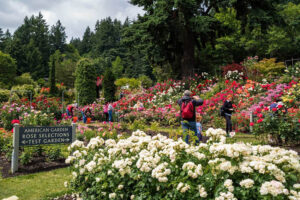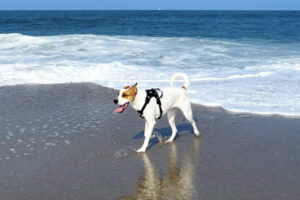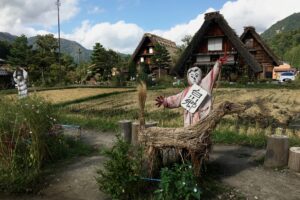


By Susan McKee
Nairobi isn’t an ancient settlement. It didn’t start as a market town or a crossroads on historic trade routes. It is an accident of colonialism: a staging point on a railway project to link British East Africa’s Indian Ocean port with an inland hub.
Back in 1899, Nairobi was set up as the work camp at Mile 237 of the Mombasa to Kampala railroad. The city grew as a British administrative center — and as big game hunters from Europe and the United States arrived to set out on safari from the city’s elegant hotels.
Since 1963, it’s been the capital of Kenya and the population easily tops 3 million. If you fly to East Africa, you’ll likely land here.
Here are the top 10 things to see in Nairobi
10. National Railway Museum
Tucked at the end of a dusty road leading off from the main train station, the museum gives a glimpse of how it all began. It’s obvious that the railroad has been allowed to deteriorate, with most freight traveling by road to and from Mombasa and only the foolhardy risking passenger service
Still, in the confines of the museum, you can imagine how it once was and see more than a dozen engines from various railways plus some train cars — including those featured in the movie “Out of Africa”.
9. Talisman
Imagine yourself in colonial East Africa during a meal at the Talisman Restaurant. Sit back on a pillow-festooned couch next to the fireplace or take a seat at a table in the garden at one of the best eateries in Nairobi. It’s out in the Karen neighborhood, not far from Karen Blixen’s house. Her memoir, “Out of Africa”, first published in 1937, recounts events of the 17 years she lived there (the area was created from her former coffee plantation in British East Africa).
The Talisman is a favorite with ex-pats and tourists alike (but, thankfully, seems to have avoided the bus tour crowd). The menu changes frequently, and there’s a reasonable wine list.
8. Kazuri
Crafts don’t have to mean endlessly copying the arts of the past. At Kazuri — not far from the Talisman Restaurant in Karen — women (and a few men) work in clay to turn out colorful beaded jewelry, tabletop items and small animals for both domestic and international markets. It began in 1975 as a small workshop fashioning handmade beads (kazuri means “small and beautiful” in Swahili). From two employees, it’s grown to more than 400, and its products are sold in 30 countries worldwide.
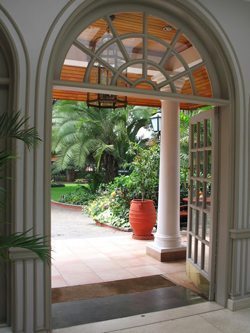
7. Nairobi National Museum
Its display cases are a bit dusty and the lighting is a bit dim, but there’s much to see in this showcase of both the archaeology and culture of Kenya.
Reproductions of the significant anthropological finds — a 2.5 million-year-old Homo erectus skull, for example — are on display along with a room full of taxidermied birds that is nothing short of astonishing.
If you’re a birder, you could spend hours checking out the thousands of exemplars of virtually every feathered creature found in East Africa. The small gift shop has representative craft items from around the country, as do the independently owned shops in a sort of mini-mall outside the entrance.
6. The Norfolk Hotel
If you really want to feel as though you’ve stepped into the colonial past of Kenya, do stop for a drink on the Lord Delamere terrace at The Norfolk Hotel. Here’s where countless African safaris have started out since 1904.
Now a Fairmont property, the hotel is just outside Nairobi’s central business district and remains wrapped in its own tropical garden. You can sip your gin and tonic in one of the comfy chairs while watching the comings and goings of the University District.
5. The Carnivore
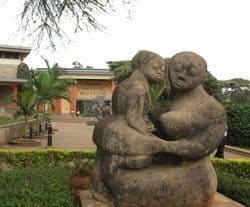
The Carnivore is probably the best-known restaurant in town, has been feeding the masses since 1980. In the beginning, they really did have exotic meats (think: zebra and lion). Tastes and mores have changed, however, and the fare is more pedestrian — but really.
Where else can you dine on crocodile tail, camel hump, and ox balls? It’s “all you can eat” — the servers keep coming with new offerings until you signal defeat.
4. Maasai market (at Village Market)
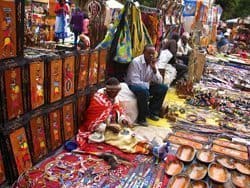
Each Friday, the Village Market — an upscale shopping mall in the Gigiri neighborhood of Nairobi — hosts a Maasai arts and crafts market. Many of the artisans who make the items are sitting there working on their next creation in between talking to potential customers.
Appliquéd cloth, beaded jewelry, painted wooden birds, “antique” masks, napkin rings with animal motifs — it’s all here. You get to bargain because nothing has a price tag.
3. Giraffe Center
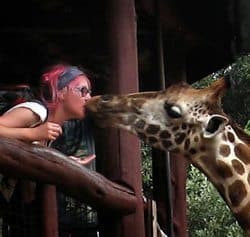
The gentle giants at the Africa Fund for Endangered Wildlife Kenya Ltd. (as the giraffe center is formally known) are anxious to make your acquaintance — if you’ve got food pellets in your hand, that is.
The pellets are handed out to visitors who’ve mounted the steps to the platform overlooking the expansive preserve. Hold out your hand, and a giraffe will nibble the goodies from your palm. Place a pellet between your teeth, lean over the raining and — yes: you’ll get a giraffe kiss.
2. David Sheldrick Wildlife Trust

Yes, you must get to the David Sheldrick Wildlife Trust well before 11 a.m. to get a parking space. Just follow the crowd, pay your admission and crowd around the pen to watch the baby elephants during the one hour per day they’re on view.
They are adorable and cuddly and will indeed let you pet them. Orphans all — mostly because poachers are still shooting African elephants for their ivory — these are the lucky ones who’ll grow up in safety and then be released into the wild. See one of these little fellows and you’ll never touch anything ivory again.
1. Nairobi National Park
Of course you go to East Africa to see the native wildlife up close and personal, but — surprise — you don’t have to spend the big bucks to go off on safari in the remote reaches of Kenya. You can hire a car and driver and drive to the Nairobi National Park — less than 10 miles from downtown — to see lions and wildebeest and rhinos and more.
- Sicily’s Special Places: Here are Five Favorites - March 12, 2020
- A Summer Cruise in the High Arctic - September 26, 2019
- The Tangled Cultures of Goa, India - March 8, 2019


